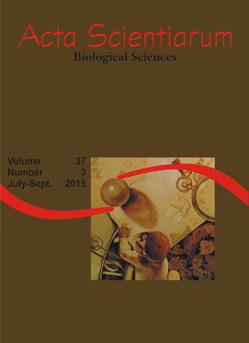<b>The sleep-wakefulness cycle of Wistar rats with spontaneous absence-like epilepsy
Resumo
Possible interactions between the sleep-wakefulness cycle and a new kind of spontaneous epilepsy, expressed as absence-like seizures and spike-wave bursts in FMUSP rats, are evaluated. The electro-oscillograms of some cortical and subcortical regions of the brain were recorded, as well as head, rostrum/vibrissae and eye movements. Recordings were performed uninterruptedly during 24 hours. The seizures were mostly concentrated in the wakefulness state but they could occur in any other phase, including paradoxical sleep. After the seizure, the rats usually returned to the same phase that was interrupted, although they often returned to wakefulness. There was an intense fragmentation of the sleep-wakefulness cycle. The incidence of each cycle phase was significantly reduced, except SIII of synchronized sleep and paradoxical sleep, thus maintaining the overall duration and architecture of the sleep-wakefulness cycle. The fragmentation of the cycle seems to be due to an impairment of the very processes that generate sleep and wakefulness. Electrophysiological and behavioral profiles of the FMUSP rats recommend accurate and comprehensive study of the animal model owing to its resemblance to seizures in humans and also to discrepancies with existing genetic or experimental epilepsy models.
Downloads
DECLARAÇÃO DE ORIGINALIDADE E DIREITOS AUTORAIS
Declaro que o presente artigo é original, não tendo sido submetido à publicação em qualquer outro periódico nacional ou internacional, quer seja em parte ou em sua totalidade.
Os direitos autorais pertencem exclusivamente aos autores. Os direitos de licenciamento utilizados pelo periódico é a licença Creative Commons Attribution 4.0 (CC BY 4.0): são permitidos o compartilhamento (cópia e distribuição do material em qualqer meio ou formato) e adaptação (remix, transformação e criação de material a partir do conteúdo assim licenciado para quaisquer fins, inclusive comerciais.
Recomenda-se a leitura desse link para maiores informações sobre o tema: fornecimento de créditos e referências de forma correta, entre outros detalhes cruciais para uso adequado do material licenciado.












1.png)




3.png)













